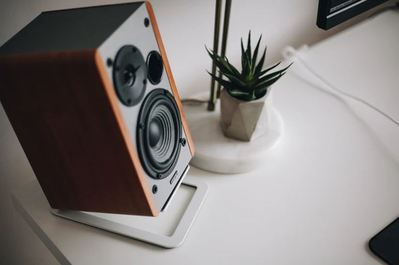What you should know about speakers

Everyone has a process that they go through before buying any gadgets. Some people just go to the store and ask for the best speaker, while others scour the internet for the newest model. Both methods are fine, but neither of them ensures that you will actually end up buying a quality speaker.
So, a question needs to be asked here: how are we supposed to differentiate between low and high-quality speakers? Well, there is no one way to answer this, simply because, in order to say that one gadget is superior to others, we would need to know what makes it better. Here’s what you should know about quality speakers.
Speaker Components
One can’t possibly differentiate between good and bad speakers without knowing about the main components that affect the sound quality. A basic speaker should contain the following: a dust cap, cone and surround, spider, voice coil, basket, top plate, magnet, and pole and rear plate. These elements are partially responsible for how the sound waves are produced; however, the responsibility doesn't solely fall on them. It also depends on the device’s frequency response, which is basically how it sends sound waves into the air. Distortion and dispersion are also other elements that can dramatically affect the music you’re listening to. Now, that you’ve familiarized yourself with the basics, it’s time to get more specific.
Standard Vs. Coaxial Speakers
There are two kinds of speakers that you’ll often see in stores: standard and coaxial speakers. A standard speaker will sound okay to you until you hear the sound quality coming from a coaxial speaker. Both of them have pretty much the same elements, except that the standard one has a single cone and only one woofer, while the coaxial one has more cones, also known as tweeters. The sound specialists at SoundCertified.com explain that the coaxial speakers have a better frequency response, which makes the overall sound quality very clear. Some argue that the difference between standard and coaxial speakers can be overlooked because standard speakers are relatively cheaper than their coaxial counterparts. Still, in reality, it doesn’t matter that much when you’re paying for quality.
Graphene
Recently there has been a lot of talk regarding a new material known as Graphene. Apparently, this material was discovered back in 2004, and specialists say that it’s the future of sound quality. According to these experts, this new material is one of the lightest and strongest elements to incorporate within speakers to enhance the frequency response.
The idea behind it is because of its lightweight; it can move very quickly, which is the perfect thing for high frequencies. This material also doesn’t produce any unwanted noises, like extra distortion due to its strength. It also doesn’t consume as much energy as traditional speakers do because of its lightweight. People have been saying that graphene will revolutionize speakers and that we’ll never listen to the same quality of music again.
Type of Speaker
Usually, when we buy speakers, especially if they’re Bluetooth ones, we take them with us everywhere. We listen to our music through them in the car, kitchen, bathroom, and even on the beach. This can be a bit damaging for our speakers because we can’t be using our speakers in places that have water or humidity. This doesn’t depend on which brand you buy, but it depends on what the device is made out of and how sensitive it is. So, if you want to use speakers on the beach, it’s probably best that you purchase a waterproof speaker. This will definitely last you longer. However, if you’re not going to be using your speakers everywhere, then you just might want to stick with traditional ones.
Think about the Space
Finally, you need to know that the speaker’s quality is not the only thing that you should be thinking about. The space around the speaker can heavily impact its quality. So, when you’re setting your device in a room, make sure that it’s relatively small so that sound can travel faster. You also don't want to put it amidst a crowded area because you don’t want to block the sound; try to find an empty place for it that’s spacey for it.

All in all, finding the right speaker can be a bit difficult at first, especially considering that specific information about speakers is not exactly common knowledge. Remember to do a bit of research about the speaker’s components before heading to any store. You don’t want to pick a speaker based on its brand, but rather on the high-quality materials, it’s composed of.


